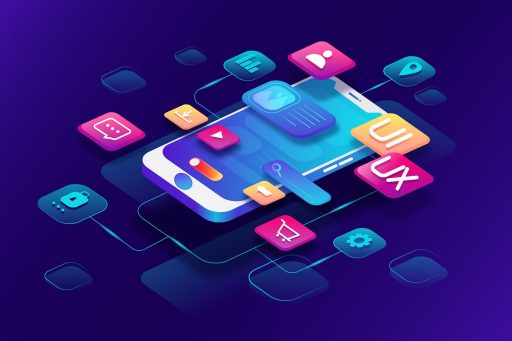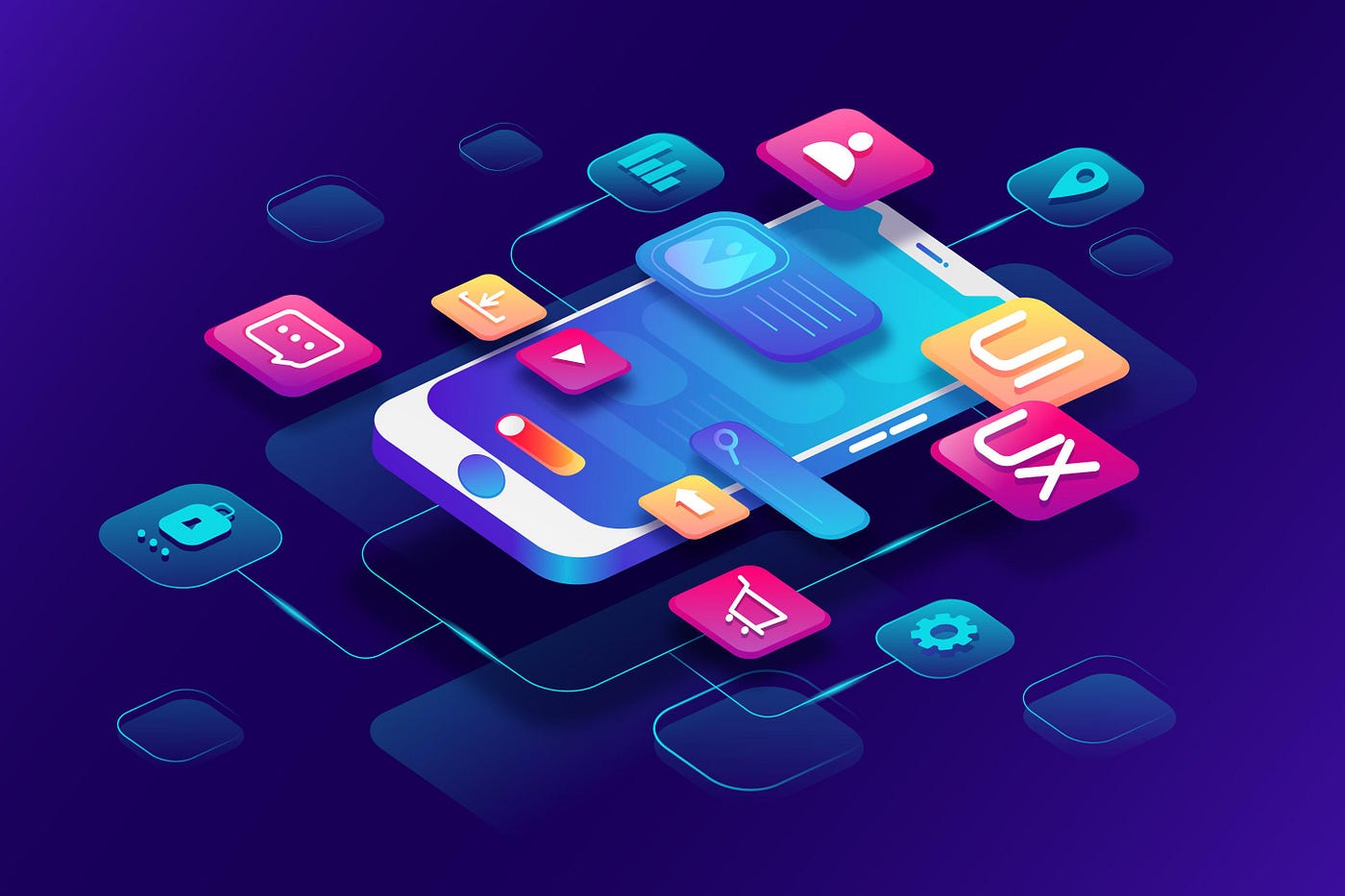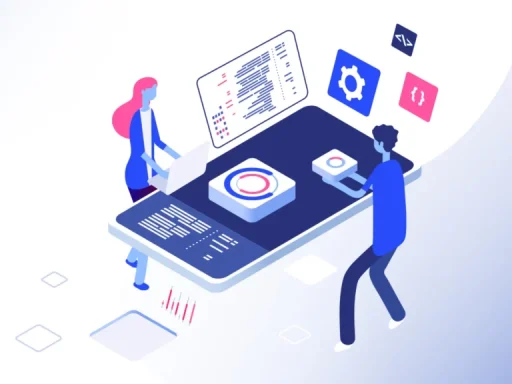If you’re an ambitious developer and dreamed of launching your own iOS app, you’re not the only one. With iPhones in everyone’s pockets and the App Store storming with opportunities, creating an app can be the gateway to endless possibilities.
Many small businesses and in-house techs are developing their own mobile applications without any major and daunting coding process. Yes, coding skills are important to developing an app, but they can also be time-consuming. However, it can be a worthwhile, satisfying experience once you launch your app.
If you’re a beginner or considering professional iOS app development services, this step-by-step guide will take it from here for you. So, let’s get started!
Step 01: Define Your App Idea
First things first: what’s your app about? An effective approach is thoughtful preparation before moving on to the development process. As everyone is aware, iOS app development is one of the most demanded in the market.
Ask yourself what my app brings. Is it a productivity tool, a gaming app, or a social networking platform? Being transparent with your ideas is the way to create the best approach to iOS application development.
Do your market research and look at your competitors. Be certain and aware of what your audience needs the most. Taking inspiration from a custom iPhone app development company creates a great vision for your app.
Pro Tip: Conduct an iOS app development consultation with iOS experts to refine your idea and make sure it’s market-ready.
Step 02: Sketch Your App’s Features
Once you have a clear idea of your app, the next important step is to outline basic ideas, like sketches or plans of its main features. Start by imagining how the app will look and work, including sketches that show where different parts will be on each screen. Focus on the app’s main functions, making sure the most important features are easy for users to find and use.
User interface (UI) components, such as buttons, menus, and icons, should be carefully considered while drawing your designs because they have a big impact on how people feel about using the application. Also, think about how users will interact with the application and how each screen relates to the others; this can help create an effortless and entertaining experience for them.
If your app isn’t your strong point, it would be better to consider making use of custom iPhone app development services to help bring your idea to life with professional design tools.
Step 03: Choose the Right Development Method
When it comes to iOS app development, there are plenty of options in 2025. There are options, like using a no-code app developer. However, choosing the right app development method that aligns with your idea can affect your process, functionality, user experience and even its persistent sustainability.
You may have options for iOS application development platforms like:
- DIY Development Tools: Platforms like Swift Playgrounds are beneficial for beginners.
- Hiring Professionals: Collaborate with a team that offers custom iOS application development services to handle everything, from coding to development.
For example, using a no-code platform can speed up the early stages of development and allow for quick changes, but it might limit how much you can customize and grow the app. On the other hand, traditional coding gives you more flexibility and the ability to add complex features, but it needs more technical skills and takes longer to develop.
Step 04: Learn or Brush Up on Swift
Easy to use and has strong features, Swift is safe and efficient to help developers write and manage their code better.
There are many tutorials, guides, and helpful people in the community for beginners in programming or iOS app development. These websites can teach beginners the basic concepts of coding and how to use Apple’s tools.
Even if you hire someone to build your iOS app, knowing the basics of Swift can help you communicate better with the developers. This knowledge is helpful for you to consult your project needs and goals clearly, leading to better teamwork and a successful final product.
Step 05: Set Up Your Development Environment
Have you decided on the tools you want to use before starting to code your iOS app? Before you do, here are some important tools you need:
- Mac Computer: You need a Mac to develop iOS apps since the software works on macOS. Make sure your Mac is powerful enough and has the right version of macOS for the latest tools.
- Xcode: This is Apple’s main software for building iOS apps. Xcode helps you write code, design your app’s look, fix errors, and test your app. It’s important to learn how to use it well, as it will be your main tool.
- Apple Developer Account: To test your app on real devices and publish it on an Apple Developer Account, you are required to access the App Store. This. This account gives you access to important tools and guides. Keep in mind there is a yearly fee for this account.
Having these tools ready can make app development easier and allow you to focus on creating a great iOS app.
Step 06: Design the User Interface (UI)
The design of your app is the first thing users will see, so it’s important to make the user interface (UI) great. To do this, create a simple, easy-to-use, and attractive UI that grabs attention and improves the user experience.
Use Xcode’s interface builder, which helps you easily arrange UI elements with a drag-and-drop method. This tool helps developers and designers quickly make prototypes and layouts, allowing for smooth design integration. Working with skilled UI/UX designers can also make your app look better and more appealing.
If you are working with a custom iPhone app development company, make sure they understand your brand’s style and values. Choose a team that can turn your ideas into a clear design plan that connects with your target audience. By matching your app’s design with your brand, you will make user’s experience more captivating and memorable for users.
Step 07: Develop the Core Functionality
The journey into coding really begins here. It’s important to connect the backend logic with the user interface so they work well together. Regular testing is key; it helps you find and fix problems early, making sure everything in the app works smoothly.
If you are making more complex apps, it might be a good idea to hire experts in custom iOS app development. They can speed up the process because they have a lot of knowledge and experience. This way, you can focus on other parts of the project while ensuring the app is high-quality and easy to use.
Step 08: Test, Test, and Test Again
Nothing is more important than testing your application in the development process. iOS app developers practice this step to prevent any glitches, errors, and flaws that need to be managed.
Nine out of ten people who use the app or uninstall it if it doesn’t perform faster, smoother, and glitches are a big no! Think about it: would you continue using the application if it isn’t even working any better? Or doesn’t contain enough safety information for your data?
To make sure of your iOS app, use Apple’s Testflight to invite users to beta test your app. Collecting feedback on usability, performance, and bugs reassures users that your app is reliable and secure. But how do you make it happen professionally? A custom iOS application development services like the team at Appnality often includes quality assurance (QA) experts to handle this for you.
Step 09: Publish Your App on the App Store
When your app is ready to launch, you must send it to the App Store. To be successful, your app should be well-designed and have a good business plan. You can make money by subscribing, making in-app purchases, and ads. Making your app fun to use can help attract more users, leading to higher earnings.
Before you submit your app, it’s important to read Apple’s rules for app submission. These rules explain what your app should look like, how it should work, and what it needs to protect user privacy. Following these rules is very important because Apple checks each app carefully, and the approval process can take a long time, sometimes days or weeks. So, it’s smart to plan and allow time for changes or feedback. This will help your app go from development to being available on the App Store more easily.
Step 10: Market and Maintain Your App
Congratulations! Your app is live! This is an exciting moment for you. Now, you need to focus on marketing to get more people to notice and use it. Use social media to create interesting posts, share news, and talk to potential users to build a community. You can also run ads to reach specific groups that fit your audience.
Besides social media, email can help you connect with users. Make a list of early users and send them newsletters about your app’s features, updates, and special offers.
Make sure your app is easy to find in the app store. Improve your app’s title, description, and keywords. Good visuals and screenshots can make your app more appealing.
Keep your users happy by regularly updating your app. Eliminate bugs and include new features based on user requests; this shows you care about their experience.
You can also work with an iOS app development consultation company. They can give you helpful advice and strategies to make sure your app does well in the long run. They can help improve your marketing and suggest ways to keep users coming back.
Consider Custom iOS App Development Services
If you’re interested in developing an iOS application professionally and with a team of experts with every skill you need. All you need to do is follow these first steps to share ideas and consult with experts so your hired iOS developers can understand your design, interfaces, and exact app vision.
Pick the professionals who can work with UI/UX design so that your app can have appealing visuals and a smooth user experience. A team of experts tracks app usage, collects analytics, and keeps the application updated and maintained by adding the latest features.
You are not just giving your app into good hands but to professionals who do more than bug fixes; these services also include keeping up with the latest trends in tech or social platforms and consistently managing the user experience.
Frequently Asked Questions (FAQs)
Q: Can I create my own iOS application?
These simple steps will help you learn to develop your very own iOS application with developer tools like Swift and Xcode. Choose any of these two; Swift is an open-source iOS programming language with the latest features. On the other hand, Xcode offers a set of tools that includes development and debugging for devices like the iPhone, iPad, iMac, Apple Watch, and Apple TV.
Q: How much time does it take to create an iOS app?
When you’re developing an iOS application, remember that it can take 1-3 months for basic iOS applications, 3-6 months for relatively complex apps, and 6-12 months for highly intricate ones.
Q: What is the cost of launching an iOS app on iOS?
It all depends on the size of the application. A small app development will cost $5,000-$25,000, a medium-sized app development will cost $25,000 to $50,000, and a complex app development will cost $50,000+.
Wrapping Up
Making an iOS app in 2025 is simpler than before if you have the right tools and plan. If you are doing it yourself or using a company that builds iOS apps, it’s important to stick to your idea.
Keep in mind that experts who provide custom iOS app development services at Appnality can make things easier and help you create a great app.
Are you ready to turn your idea into an app? Let 2025 be the year you do it!





